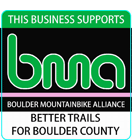Last winter Steve and I decided we'd like to try a 1000km Brevet in another country to start the process of achieving our R-5000 award. For more information on this, see
http://www.rusa.org/faq1.html
So we begin again....
We originally had planned to head over to Scotland and participate in their new 1000km but found out the event was full within weeks of opening. Since I had a broken hip at that time, we didn't sign up. Oh well. We found a great 1000km Brevet to do in Nova Scotia. That became the goal for the season. It would also allow us part of our
Randonneur 5000 . (rahn doe ner) - One of the most prestigious awards a
randonneur can earn. To be one of the recipients, a
randonneur must do a full series of 200, 300, 400, 600, and 1000km
brevets, a Paris-Brest-Paris
randonneur event, a Flèche team ride, and the remaining distances ridden on sanctioned
brevets for a total of 5000 kilometers. The qualifying events must all be completed within a four-year period. You can read more about all of the awards available at
http://www.rusa.org/.
After doing our SR (Super Randonneur) series in Colorado, we continued to add up miles of training, both long distance for endurance and also short and fast 100km Permanent Populaires
http://www.rusa.org/permfaq.html. This allowed us to maintain fitness, keep the long distance fitness going and also to be a little faster, which would allow us to have more night time control sleep. Always a good thing.
Off we went to Nova Scotia.
http://www.randonneurs.ns.ca/
We were planning for temperatures in the 60s. Nop,e we got 100 degree days. Oh well-at least we had planned for the wrst weather conditions and got sun, instead.
We had a great start time of 6 AM and that allowed for plenty of sleep before starting the 1000km Brevet. There were 5 of us at the start and we ended up staying together for the event.
Welcome to Nova Scotia.
http://www.novascotia.com/en/home/default.aspx. The ride started right near our hotel in Dartmouth. The controls were in Sherbrooke, Half Island Cove, Port Hastings, Whycocomagh, St. Peters, Aulds Cove, Antigonish, Stellarton, Brookfield, and back to Dartmouth. Wonderful things to look at and keep us occupied. From rolling hills and 4-8 minute climbs, to small lobster villiages along the inlets and coves. Little towns and many little cafes to fill up on food and water.
The controls were about 100km apart. A little farther that what we are used to in the United States. Staying with the local riders proved to be prudent because we are so used to a gas station or small grocery store every 30 miles; about half the distance were were getting with the controls in Nova Scotia. Besides-it was very enjoyable to have the local company of the local riders. Very hospitable!
Steve and I had planned well for the conditions and hills of Nova Scotia. Actually they were not like the hills of Colorado, so we were prepared. Something one needs to consider when going to another country or state for a Brevet event-know your terrain.
Many of the controls (which also meant the stops for food) were at Tim Hortons. Perfect for soup, sandwiches, and other treats, and liquiq consumption.
The biggest challenge for me was the humidity (with the heat). I had decided to double up my shorts for a softer ride on the sit bones but ended up with a heat rash. No worries here-I adjusted to this by wearing only one pair of shorts for the second half of the 1000kms. No big deal. But something to keep in mind when you travel to different conditions. We often think about the terrain and the weather-but the weather can mean higher humidity and not just rain or sun.
My favorite parts of this ride were the people we rode with. The riders form the Nova Scotia.
http://www.randonneurs.ns.ca/ club were so nice and helpful. The volunteers had our meals in the hotels ready when we arrived and also had our drop bags delivered into our hotel rooms.
We stayed as a group which is such a treat because often Randonneurs ride solo or get very spread out in long Brevet events.
The controls were well placed apart and came at times when we really needed to refeul and get ice (hot temps).
The scenery was fantastic and just what I would expect along coastal terrain.
We almost never saw a car and when we did they were extremely polite. Really!
It was a fantastic trip and we are well on our way for our
http://www.rusa.org/award_r5000.html award which, of course is tied to the mother of all 1200km Brevet events-PBP (Paris Brest Paris) "PBP" as it is commonly called, is a grueling test of human endurance and cycling ability.
Organized every four years by the host Audax Club Parisien, the
Paris-Brest-Paris Randonneurs
is the oldest bicycling event still run on a regular basis on the open
road.
Beginning on the southern side of the French capital, it travels west
600 kilometers to the port city of Brest on the Atlantic Ocean and
returns along the same route.
http://www.rusa.org/pbp.html
Thank you to our new friends in Nova Scotia for making our stay and ride wonderful!







































